- Government and Non-Profit Organizations
- Mayor Eric Adams
-
Closed
Description
The NYC Department of Citywide Administrative Services (DCAS) makes city government work for all New Yorkers. Our commitment to equity, effectiveness, and sustainability guides our work providing City agencies with the resources and support needed to succeed, including:
- Recruiting, hiring, and training City employees
- Managing 55 public buildings
- Acquiring, selling, and leasing City property
- Purchasing over $1 billion in goods and services for City agencies
- Overseeing the greenest municipal vehicle fleet in the country
- Leading the City's efforts to reduce carbon emissions from government operations
Conducting Business with the City
The Department of Citywide Administrative Services (DCAS) administers several programs that allow the public to conduct business with the City of New York.
Opportunities exist for vendors to supply goods and services to DCAS and other City agencies through our Office of Citywide Procurement. Various Request for Proposals and Request for Bid solicitations can be found by checking the City Record regularly.
For individuals looking to lease and/or buy space in City-owned properties, we have various auction programs through our Real Estate Services division. Properties suitable for concession operations will be added to the site in the near future. Additional auction and sales opportunities for the purchase of surplus goods, including used vehicles from the City's fleet, are available through our auction partners.
The citywide initiative to reimburse qualifying nonpublic schools for the cost of procuring certain security services became the responsibility of DCAS in 2016. The program allows for the selection of qualified guard services and the payment for those services to school outside of the New York City public school system.
For City Agencies
The Department of Citywide Administrative Services (DCAS) provides shared services to support the operations of New York City government. This includes providing City agencies with goods and other resources to empower their success.
We own and manage 55 buildings that are primarily occupied by City agencies. It is our responsibility to manage each facility and provide security to keep our tenants and the public safe.
The DCAS Division of Energy Management (DEM) is the hub for energy management in City buildings. DEM plays a critical role in supporting our agency partners' progress towards the City's major emissions reduction and energy objectives.
New York City operates over 30,000 owned and leased vehicles, the largest municipal fleet in the United States. NYC maintains fleet units at 37 main repair locations and has over 400 in-house fueling and 400 separate electric charging locations.
DCAS also runs the City's civil service system, provides shared personnel-related services, and offers guidance and enforcement on equity & inclusion related policies and practices for the City's workforce.
Date Built: 1803-1811
Architect: Joseph Francois Mangin and John McComb, Jr.
"…one of the most beautiful early 19th century public buildings in the United States."
-- NYC Landmarks Preservation Commission
City Hall has been the seat of New York City government since 1812. Located in City Hall Park at the southern end of the Civic Center, City Hall is one of the most treasured buildings in the City.
In the 17th century, the Dutch City Hall was in the old City Tavern on Pearl Street. A new City Hall was built in 1700 at Wall and Nassau Streets. It was renamed Federal Hall when New York became the first capital of the United States. The 1833-1842 Federal Hall National Memorial is now on this site. The Common Council talked about a new City Hall as early as 1776 but the Revolutionary War intervened. A site was chosen, the old Common at the northern limits of the City, now City Hall Park.
In 1802, a competition was held for the new City Hall and twenty-six proposals were submitted. First prize of $350 was awarded to John McComb, Jr. and Joseph Francois Mangin. John McComb's father repaired the old City Hall in 1784. John McComb, Jr. was a New Yorker while Joseph Mangin was trained in his native France. McComb designed the landmark Hamilton Grange on Convent Avenue, Castel Clinton in Battery Park and the James Watson House on State Street. Joseph Mangin was City Surveyor in 1795 and published an official City map with Casimir Goerck in 1803. He designed the landmark Old St. Patrick's Church on Mott Street. City Hall is the only known project the two architects collaborated on together.
Construction was delayed until 1803 due to objections by the Common Council that the design was too expensive. The size of the building was reduced and brownstone was used on the rear to keep costs down. Construction moved slowly due to labor disputes and a Yellow Fever outbreak. Workmen earned one to one and one half dollars a day. The building was dedicated in 1811 but did not open until 1812.
The architectural style of City Hall is a combination of two famous historical movements. The exterior facade reflects that of the French Renaissance, and the interior that of the American-Georgian style. The building consists of a central pavilion with two projecting wings. The design of City Hall influenced at least two later civic structures, the Tweed Courthouse and the Surrogate's Courthouse. The entrance, reached by a long flight of steps, has figured prominently in civic events for over a century and a half. There is a columned entrance portico capped by a balustrade, and another balustrade at the roof. The domed tower in the center was rebuilt in 1917 after the last of two major fires. The original deteriorated Massachusetts marble facade, with brownstone on the rear, was completely reclad with Alabama limestone above a Missouri granite base in 1954-6.
On the inside, the rotunda is a soaring space with a grand marble stairway rising up to the second floor, where ten fluted Corinthian columns support the coffered dome. The rotunda has been the site of municipal as well as national events. Abraham Lincoln and Ulysses S. Grant were laid in state here, attracting enormous crowds to pay their respects. City Hall is a designated New York City Landmark. It is also listed on the New York State and National Registers of Historic Places.
0 Reviews
Business Details
- Mayor Eric Adams
- Login to view
- Click to Call 212-504-4115
- 260 Broadway, New York, New York 10007, United States
- Login to view
- https://www.nyc.gov
Browse Nearby
Statistics
- 47Views
- Ratings
- 17-04-2024 22:25:10
Share this info
Login to your Be found - Be connected account

No Account yet? Click here to signup
Already have an account? Sign In
FEEDBACK / SUGGESTIONS
Give us your valuable feedback to make website more user friendly


Leave your details below


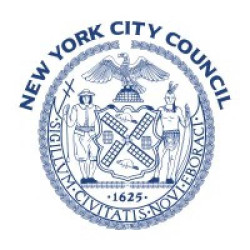




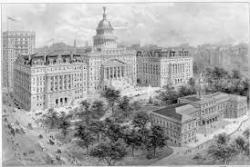
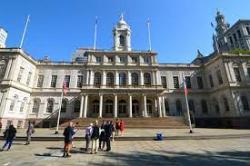
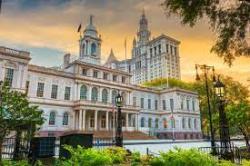
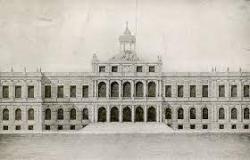

Sign in by Email
Sign in with Social Media
Simple and convenient way for logging